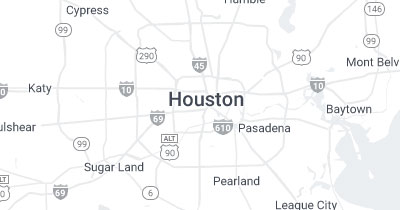Middle back pain: Causes, treatment, and exercises
- Updated on: 2018-12-23
- Read original article here

In this region, there are 12 spinal disks, several vertebrae, and many muscles and ligaments. Any of these structures can become irritated or damaged, leading to middle back pain.
Read on to learn more about the causes of middle back pain and discover techniques to find relief.
There are many possible causes of middle back pain, ranging from injury to poor posture.
Pain in any part of the back becomes more likely as a person ages. Back pain is typical in people aged 30 to 60, but it can affect people of any age.
Natural causes of back pain in older adults include:
There are a number of different forms of arthritis, some of which can affect the back.
Osteoarthritis (OA) is a common degenerative joint disease that affects 30 million adults in the United States. OA causes the ends of bones to rub together, leading to pain, swelling, and stiffness.
Ankylosing spondylitis is a type of arthritis that affects the spine. Symptoms include pain and stiffness in the back. Over time, it causes the vertebrae to fuse together, which can impact posture and mobility.
A fracture or broken bone can occur in any of the vertebrae in the middle back as a result of a sports injury, automobile crash, or fall.
Extreme deterioration of the spine over time, such as from osteoarthritis, can also cause a fractured vertebra.
Symptoms include intense pain that gets worse with movement. If the injury affects the spinal cord, it can lead to tingling, numbness, and incontinence. Fractures require immediate medical treatment.
Disks are located between the vertebrae, where they act as shock-absorbing cushions. They also help a person move.
The disks are filled with liquid and can rupture or bulge outward. This is known as a herniated disk, slipped disk, or ruptured disk, and it puts pressure on the surrounding nerves.
A herniated disk in the middle back does not always cause symptoms, but it may result in pain, tingling, or numbness.
Kidney problems can cause pain in the middle back, just underneath the ribcage on either side of the spine.
The most common causes of kidney pain are infections and kidney stones. Additional symptoms include:
A lack of exercise leads to weak muscles, which can contribute to pain. People who exercise using improper lifting techniques can also experience pain in the back.
Research suggests that people who smoke tobacco also have an increased risk of developing chronic back pain. Smoking is also thought to reduce the nutrient supply to the spinal disks, which increases the risk of pain, degeneration, and injury.
Repeatedly lifting heavy objects or carrying items improperly can cause the muscles and ligaments in the back to stretch or tear.
Being overweight or obese puts additional strain on the muscles, bones, and other structures in the back.
In a meta-analysis of almost 100 studies, obesity was found to increase the risk of back pain.
Osteoporosis is a type of bone disease that results in brittle bones. It occurs when the body does not make enough new bone to replace natural bone loss.
Approximately 54 million people in the U.S. have osteoporosis or are at risk of developing it.
People with osteoporosis in the back can experience middle back pain due to strains or compression fractures.
Incorrect posture while sitting or standing is a leading cause of back pain. Slouching increases pressure on the spine and leads to strained muscles as they try to maintain balance.
People who experience depression or anxiety tend to be at increased risk of developing back pain.
Research suggests that people with depression are 60 percent more likely to develop back pain than people who do not have depression.
Scoliosis causes the spine to curve sideways. It leads to an uneven distribution of weight throughout the back and may cause middle back pain.
If a tumor grows in the middle back, it can affect spinal alignment and put pressure on the nearby nerves, muscles, and ligaments.
The treatment for middle back pain will depend on the underlying cause. Doctors usually suggest home remedies first but may recommend medical and surgical interventions if needed.
Alternating hot and cold compresses, or ice and heat, can provide relief from many types of middle back pain.
Ibuprofen (Advil) or naproxen (Aleve) may relieve pain and swelling.
Poor posture should be corrected to alleviate back pain. Practice correct posture by:
Workstations should be ergonomically optimized for back health. People should adjust the height and positioning of the chair, desk, computer screen, keyboard, and mouse for their needs.
Several exercises may help to stretch and strengthen the muscles in the middle back to treat and prevent pain.
People should speak with a doctor or physical therapist before beginning any new exercise regimen.
A person should see a doctor for back pain that persists for several days or does not respond to home remedies.
If medication or physical therapy do not alleviate middle back pain, surgery may be necessary. Types of surgery for the middle back include:
Not all cases of middle back pain are preventable, but the following steps may reduce the risk of injury:
Middle back pain symptoms vary depending on the underlying cause of the pain.
A person should see a doctor if they experience any of the symptoms for more than 3 days, especially if they do not respond to home remedies.
People should seek immediate medical treatment for back symptoms following a fall, collision, or another injury.





